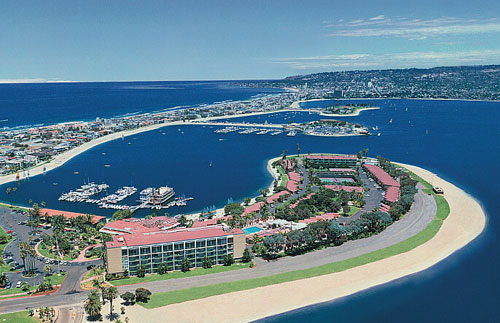
|
|
Workshop Working Groups and Topics This year, the TTF Workshop will consist of:
This
plenary session will highlight recent developments in
experiment, theory, and computations with regard to
transport at finite beta. Finite plasma beta couples
electrostatic and magnetic perturbations in the plasma core,
leading to modifications to the parallel electric field,
modifications to the interaction between the microturbulence
and zonal flows due to the emergence of magnetic stresses,
and the possible modifications to the magnetic topology.
Magnetic perturbations and breaking of magnetic surfaces
also appears to be important in the plasma edge for
understanding both the ELM crash and mechanisms which
suppress ELMs. We will welcome submissions which explore
the effects of finite beta in both the core and edge
plasmas. Understanding and predicting the dynamics of transition to and from regimes of transport barriers and/or enhanced confinement, such as the I-mode, H-mode, ITB, Hybrid modes, etc remain important issues in transport and turbulence research. Recent interesting experimental results have highlighted new insights and new questions relevant to transition dynamics. This session will focus on experiment, theory and simulation of forward and back transitions to enhanced confinement regimes. All aspects of the problem are open to discussion, including the effects of mean, zonal and GAM flows, magnetic resonances and shear, fueling, heating and torque profiles etc. Papers dealing with the relevant physics on all confinement devices are welcome, as are papers which elucidate the connections between the dynamics of the various phenomena.
This years focus areas for the Core Breakout Oral Session are: 1) Understanding multi-channel transport. Experimental, model and inter-comparison results which can be used for determining the relationships between the Ion thermal transport, Electron thermal transport, Particle transport and momentum transport channels. Of particular interest are Model-Experiment comparisons which can be used to qualify our understanding of the multi-channel transport physics and can be used for validation of the models. 2) Internal transport barrier initiation, evolution and control. Particularly to shed light on barriers in a select group of transport channels, and the relationship between the edge and internal barrier dynamics. B. Edge Physics Working Group (R. Groebner, R. Maingi) This years focus areas for the Edge Physics Breakout Oral Session are: 1) US DOE Joint Research Target on Pedestal Structure. The session will deal with the physics mechanisms responsible for the structure of the pedestal. Topics include comparison of observed pedestal structure with predictive models, and characterization of pedestal turbulence and comparison with models. This work contains both a theory and an experiment component. 2) Benevolent Pedestal Fluctuations, which will concentrate on a discussion of smaller-scale pedestal instabilities that regulate the density buildup in enhanced confinement modes without providing large heat loads to the PFCs. Examples of such modes include the Edge Harmonic Oscillation, the Quasi-Coherent mode and the Weakly-Coherent Modes
This year, the oral working group session on Momentum Transport will have a special focus on the theory, experiment and simulation of CORE intrinsic rotation phenomena. This will include spontaneous flow reversals, intrinsic rotation in ITBs and other enhanced confinement states, and ECH and LH driven plasmas. Papers which address/explain the relation among these phenomena are especially welcome. D. Fast Particle Working Group (B. Breizman, N.N. Gorelenkov, W. Heidbrink) The 2011 EP WG sessions will concentrate on collaboration between the two recently funded SCIDAC projects. Both groups have agreed to exchange their project descriptions prior to the TTF meeting to initiate this discussion. We will make an effort to encourage theorists and experimentalists to work together on validation issues. 1) Understanding relative roles of bursty (coherent) and turbulent (stochastic) transport mechanisms for energetic particles. 2) Transport of runaway electrons. E. 3D (C.S.Chang, C. Hidalgo, K. Ida) To clarify the role of non-axisymmetric effects in tokamaks, stellarators and RFPs through intrinsic or applied 3D magnetic structures. Magnetic perturbations have been found to have a strong influence in controlling ELMs through stochastization of the magnetic field, and also to control zonal flows. This year's focus areas for the 3D breakout oral session are: 1) The stochastization of the magnetic field: appearance or disappearance of a stochastic region, which has a strong impact on the transport both in the core and the edge, including the transition between stochastic and nesting magnetic fields. 2) Driving and damping mechanisms of zonal flows: amplification of zonal flows by mean radial electric fields and the role of the mean and fluctuating radial electric fields on transport self-regulation. Investigation of the interplay between mean radial electric fields and zonal flows in the transition from nesting to stochastic regions, and the role of symmetry F. Verification and Validation Working Group (P.W. Terry, W. Nevins) The V&V group intends to solicit work that describes the development, use, and effectiveness of validation metrics. We may not get much back this time around, but if we did, it would be appropriate to break out at some point and have a working session on how to refine and optimize metrics barriers in a select group of transport channels, and the relationship between the edge and internal barrier dynamics.
|
|


